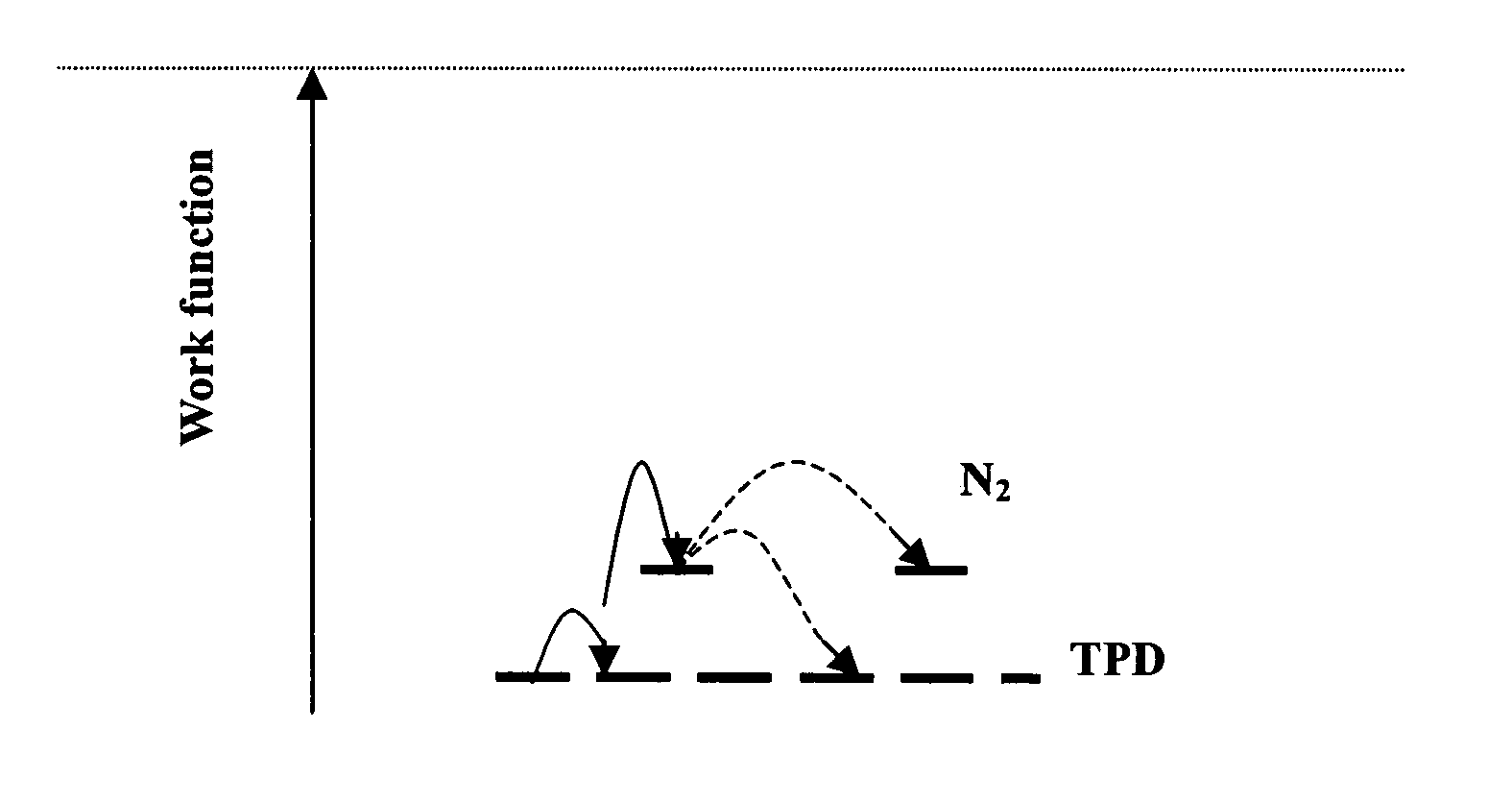Method for manufacturing organic light-emitting diodes
a technology of organic light-emitting diodes and manufacturing methods, which is applied in the manufacture of electric discharge tubes/lamps, luminescent coating applications, discharge tubes luminescnet screens, etc., can solve the problems of reducing the effective recombination rate of electrons and holes, and achieves the effect of improving the luminance efficiency of organic light-emitting diodes and high energy levels
- Summary
- Abstract
- Description
- Claims
- Application Information
AI Technical Summary
Benefits of technology
Problems solved by technology
Method used
Image
Examples
Embodiment Construction
[0020]The present invention discloses a method for manufacturing an organic light-emitting diode, by adding a reaction gas that can form impurities with high energy level in a hole transport layer when growing the hole transport layer. These impurities with high energy level can confine holes in the hole transport layer, so as to increase effective recombination rate of electrons and holes injected into the electron transport layer, thereby achieving an objective of enhancing luminance efficiency with increasing process cost load. In order to make the illustration of the present invention more explicitly and completely, the following description and the drawings from FIG. 2 to FIG. 6 are stated.
[0021]Referring to FIG. 2, FIG. 2 illustrates a flowchart showing a process for manufacturing an organic light-emitting diode in accordance with a preferred embodiment of the present invention. First, in step 200, a transparent substrate is provided into a chamber, wherein the material of the...
PUM
 Login to View More
Login to View More Abstract
Description
Claims
Application Information
 Login to View More
Login to View More - R&D
- Intellectual Property
- Life Sciences
- Materials
- Tech Scout
- Unparalleled Data Quality
- Higher Quality Content
- 60% Fewer Hallucinations
Browse by: Latest US Patents, China's latest patents, Technical Efficacy Thesaurus, Application Domain, Technology Topic, Popular Technical Reports.
© 2025 PatSnap. All rights reserved.Legal|Privacy policy|Modern Slavery Act Transparency Statement|Sitemap|About US| Contact US: help@patsnap.com



